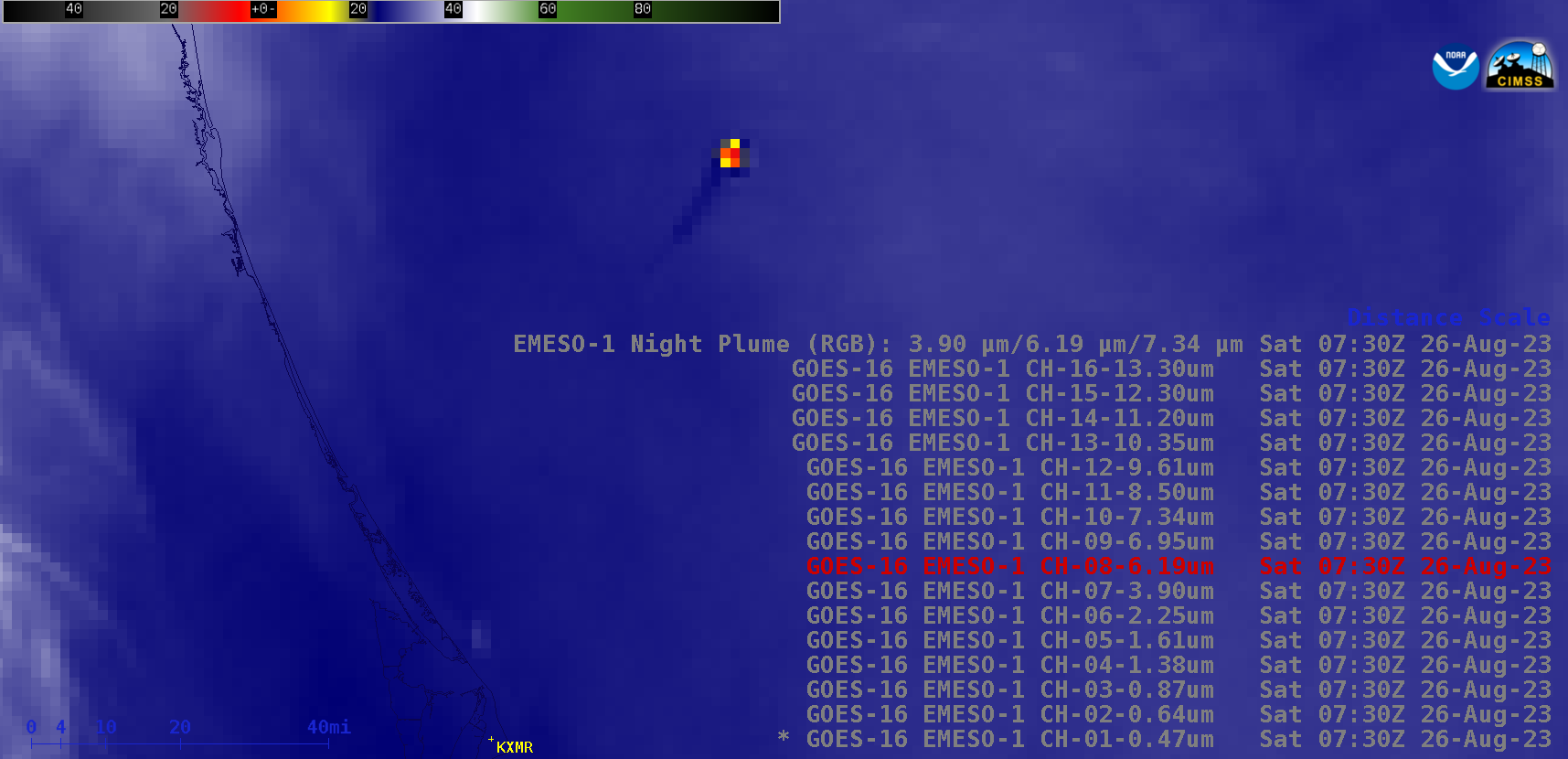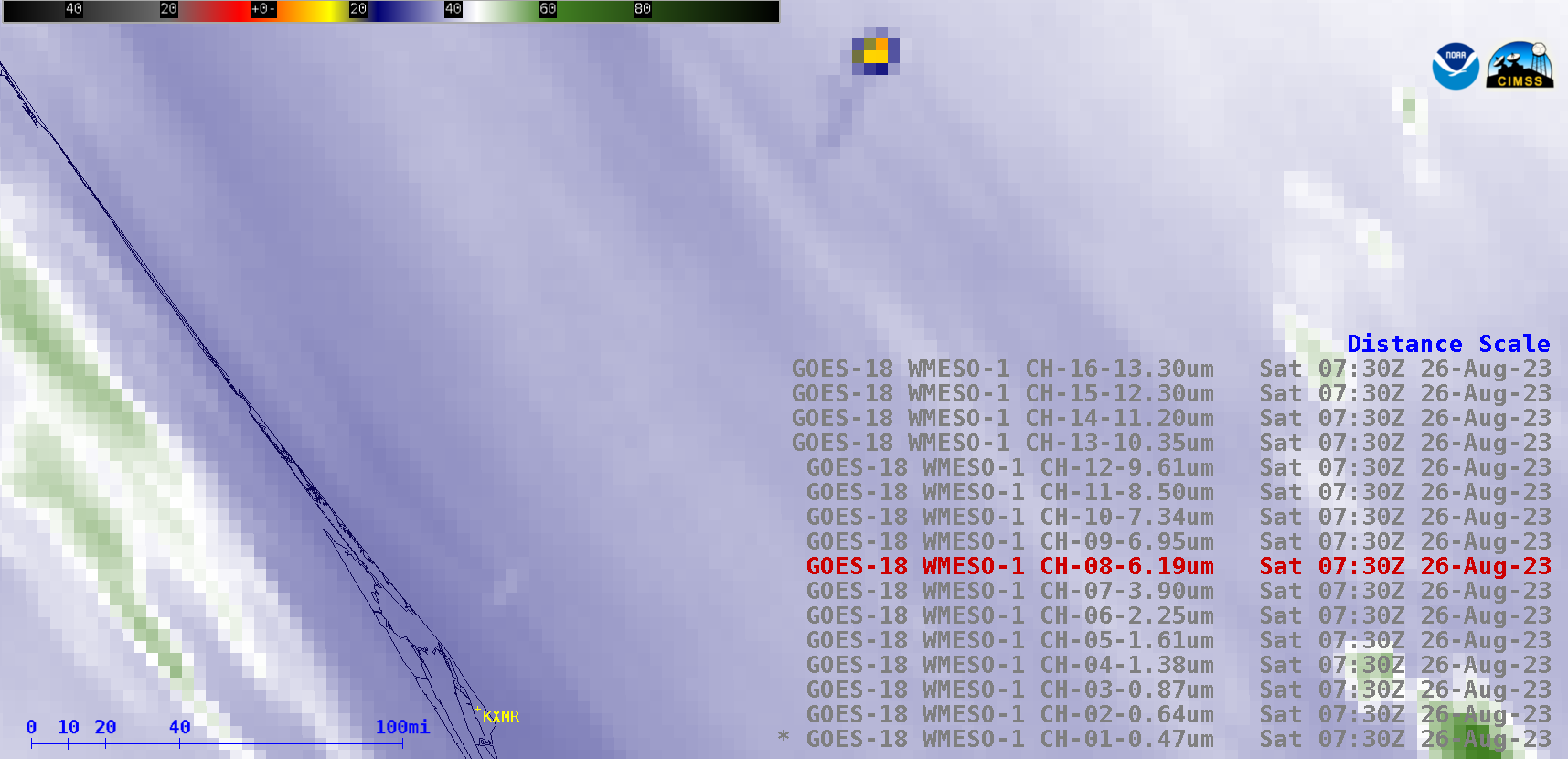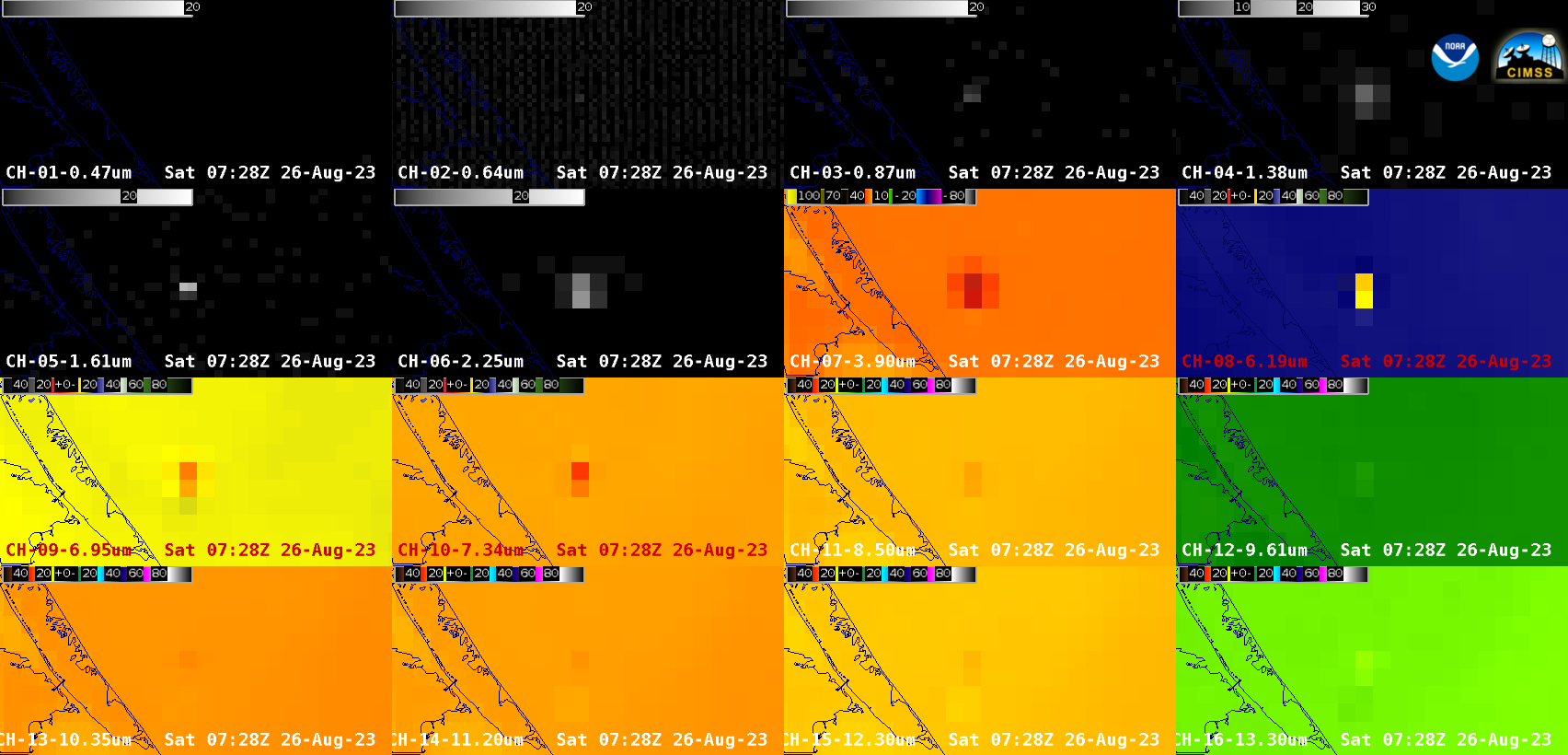Satellite signatures of the NASA/SpaceX Crew-7 launch

Stepped sequence of GOES-16 images from all 16 ABI spectral bands, plus a Rocket Plume RGB; KXMR denotes the location of the Cape Kennedy rawinsonde launch site [click to play animated GIF | MP4]
A 16-panel display of GOES-16 ABI spectral bands at 0728 UTC (below) showed the rocket signature in bands 02-16 at that time.
In fact, a very subtle reflectance signature was also apparent in ABI spectral band 01 immediately after launch at 0727 UTC — it was partially masked by the map overlay, which was removed for the 0726-0727 UTC comparison seen below. A zoomed-in view using a stepped sequence of GOES-16 images from 16 ABI spectral bands 03, 05, 06 and 07 (below) showed the brighter/warmer signature of the Falcon 9 rocket Stage 1 Landing Burn at 0734 UTC, as it successfully returned to the Cape Canaveral Space Force Station.
Stepped sequence of GOES-16 images from 16 ABI spectral bands 03, 05, 06 and 07, 0733-0735 UTC [click to play animated GIF | MP4]

Stepped sequence of GOES-18 images from all 16 ABI spectral bands [click to play animated GIF | MP4]




